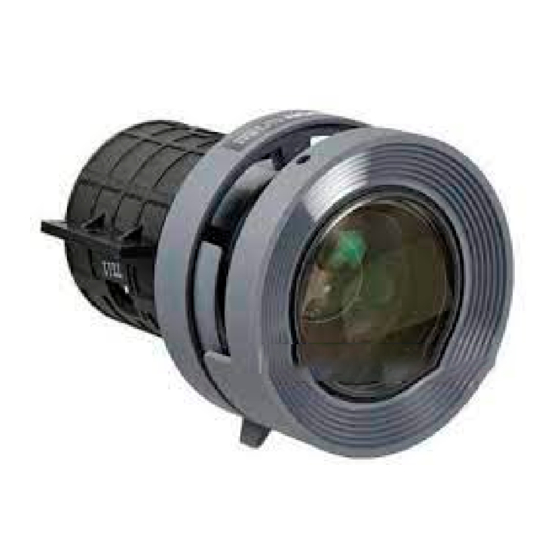Epson PowerLite 7900p Projector
Long Throw Zoom Lens (V12H004L05)
To determine the diagonal size of an image (in inches) when
you know the projection distance:
Maximum diagonal size =
(((2.54 × projection distance) / 100) × 20.4)
Minimum diagonal size =
(((2.54 × projection distance) / 100) × 15.23)
To determine the projection distance (in inches) when you
know the diagonal size of the screen image:
Maximum projection distance =
(((diagonal size – 1.45) / 15.23) × 100 / 2.54
Minimum projection distance =
(((diagonal size – 1.93) / 20.54) × 100 / 2.54
Connecting the Projector
You can connect the projector to three computer sources or
four video sources—up to a total of four sources altogether.
You can include an independent sound channel for each
source. (See the Quick Setup poster or the User's Guide for
complete setup instructions.)
Note: The preview feature lets you see all the sources at a glance,
so you can easily switch among them. See page 5.
Types of Connections
The following types of connections are possible, depending on
the kinds of signals your equipment generates and its available
output ports.
Computer equipment
Output signal
Required cable
VGA cable
Analog RGB video
BNC cable
VGA-to-BNC cable
DVI-D dual-link cable (DVI-to-DVI or
DVI
DFP-to-DVI available from Epson)
Video equipment
Output signal
Required cable
Composite video
RCA video cable
S-Video
S-Video cable
Component video—
BNC cable
NTSC (YCbCr)
Component video—
BNC cable
HDTV (YPbPr)
VGA cable
RGB video
BNC cable
4
Epson PowerLite 7900p Projector
-
The projector should automatically detect the correct source.
Note: If it fails to detect the source, make sure the
Input
. See the User's Guide for more information.
Auto
+
If necessary, you can switch to the correct source by pressing
1.93
the corresponding source button on the remote control or
projector. See page 5 for details.
+
1.45
Playing Sound Through the Projector
You can play sound through the projector's speaker system or
you can attach an external speaker system.
You can use either of these commercially available audio
cables:
If your computer or video equipment is connected to the
Computer
If your equipment is connected to the
port, or to the
Using the Remote Control as a Wireless
Mouse
If you've connected a computer to the projector, you can
use the projector's remote control as a wireless mouse by
connecting a USB cable to both the projector and your
computer. The wireless mouse function is supported on
systems with a USB port running Windows XP, 98, 2000, or
Me; or Macintosh OS 8.6 to OS X 10.2. See the User's Guide
for details.
Viewing Images on an External
Monitor
You can use an external monitor to display images from any
connected computer source. This lets you view your
presentation close-up, as well as on the projection screen.
Note: Some LCD monitors may not be able to display the image
correctly. If you have trouble displaying the image, connect a
multiscan monitor. If you're projecting computer images, make
sure the computer's refresh rate is set to 65 Hz or greater.
The Monitor Out port will not display images from a video
source.
9/04
and
options in the Setting menu are set to
BNC Input
or
port, use a stereo mini-jack cable.
DVI
ports, use an RCA-style audio cable.
BNC
Computer
or
Video
S-Video

